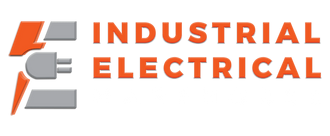Screw Terminals: A Guide to Secure Electrical Connections
Screw terminals are a fundamental aspect of creating reliable electrical connections, especially in environments where durability, safety, and ease of use are crucial. Whether you’re working with industrial equipment or residential appliances, understanding how screw termination works—and why it matters—can help ensure stable performance and fewer electrical issues down the line.
What Is Screw Termination?
Screw termination is one of the oldest and most trusted methods for securing wires in electrical systems. It involves using a screw to clamp down a wire into a conductive slot, ensuring it stays firmly in place. This technique offers a reliable connection point that can handle moderate to high current levels, making it widely applicable across industries.
Also referred to as screw terminals, these connectors are often found in terminal blocks and junction boxes. Their simplicity, affordability, and performance make them a go-to solution for many electricians and installers.
How Screw Termination Works
The basic principle of screw termination is straightforward yet highly effective. A stripped wire is inserted into a metal channel, and a screw is tightened to compress the conductor, establishing a strong electrical connection. The clamping action ensures minimal resistance and reliable conductivity.
This method is particularly effective in situations with vibration or movement, such as in heavy machinery or mobile devices, where stable connections are a must. Products like axial screw contacts offer even greater precision by driving a conical spike into the center of the wire, compressing all strands equally.
Key Components of Screw Terminal Blocks
A screw terminal block consists of several critical components that work together to ensure safe and efficient screw termination:
- Conductive Strip – Typically made from copper or brass, this channel provides a low-resistance path for electricity.
- Screw Clamp – Tightens onto the wire, holding it securely in place.
- Clamping Mechanism – Ensures uniform pressure and compensates for wire size variations or vibration over time.
These elements make screw terminals both versatile and durable for long-term use.
Types of Screw Terminations
Not all screw terminations are built the same. Here are the most common types used today:
Classic Screw Terminals
These use a basic screw and metal strip to hold wires. They’re known for their ease of installation and widespread application. For instance, the Hirschmann Bunch Pin Plug supports up to 16A, making it ideal for mid-range power requirements.
Axial Screw Contacts
A more advanced form of screw termination, these terminals use a spike-driven mechanism that evenly compresses wire strands from the inside. This technique improves connection quality, especially for thicker wires or high-vibration setups.
Advantages of Using Screw Termination
Why choose screw termination over other connection methods? Here are the top benefits:
-
Stable Connection for Large Wires
Screw terminals support higher currents and ensure efficient energy transfer, making them suitable for heavy-duty equipment. -
Low Maintenance
Once installed, screw termination systems require little to no maintenance. Some units come with built-in insulation and grounding features, like the Yellow Hirschmann Plug, providing peace of mind for long-term use. -
Cost-Efficient and Accessible
Compared to more complex connectors, screw terminals are budget-friendly and easy to source.

Applications of Screw Termination
Screw termination technology is used across a wide range of sectors:
-
Industrial Manufacturing
Machinery such as conveyors and robotic systems use screw terminal blocks for consistent, reliable connectivity under demanding conditions. -
Consumer Appliances
Devices like refrigerators and washing machines benefit from the durability and safety offered by screw termination. A plug like the Green Hirschmann Plug demonstrates how this method can be both safe and space-efficient. -
Automation and Control Panels
Screw termination blocks are standard in control systems, offering clear labeling, easy access, and reusability.

Key Takeaways
Screw termination remains a cornerstone of modern electrical installation due to its reliability, safety, and ease of use. Whether you're working in industrial environments or residential projects, using screw termination ensures efficient energy flow and minimal maintenance.
By choosing the right screw termination products—such as axial screw contacts and insulated terminal blocks—you can enhance both the performance and safety of your electrical systems.
Frequently Asked Questions (FAQ)
Why choose screw termination over other methods?
Screw terminals are easy to install, modify, and maintain. They don't require specialized tools, making it ideal for quick fieldwork and retrofitting projects.
Can screw terminals handle high voltages?
Yes. High-quality screw terminals, when used correctly, can handle elevated voltages and currents while maintaining safety and efficiency.
Are there any drawbacks?
The main limitation is size—screw terminals may require more space compared to other compact solutions. However, newer models are becoming more space-efficient without sacrificing performance.

